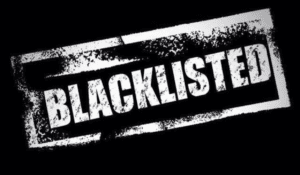0 % APR AND *FREE* FLOOR MATS ON ALL USED VEHICLES! CALL TODAY!!!!
What was your first reaction to the line above? Did you cringe? Did a wave of distrust wash over you? Were you anxiously searching for the trash icon to delete the message?
Despite our own negative reactions, many well-meaning dealers continue to send emails with subject lines like this. It’s just one of the many reasons that your emails never reach your customers: They’re getting sent straight to the SPAM folder.
What’s a dealer to do? Even if you use an email delivery service like Mailchimp, or Constant Contact, it’s still up to you—the sender—to create an email worthy of being received. In this guide, we’ll show you how.
Why Emails Get Caught in Spam
Most dealers assume that by using an email service though their CRM or a 3rd party, their emails will automatically get delivered to their customers. Unfortunately that’s not the case. It doesn’t matter HOW you send your emails; it’s WHAT you send and to WHOM you send them.
Every email service provider—Gmail, Yahoo, AOL, etc.—uses their own spam filters to protect customers from unwanted email. If you opened up your email one day to find 300 shady solicitations, you’d be furious. That’s why spam filters exist: to provide a good experience for the end user.
Each email service provider is a little different, but there are some common characteristics that tend to trigger SPAM filters:
- Spammy subject lines. Subject lines like the one at the beginning of this article will send your email to SPAM almost every time. What makes a subject line spammy? Using all-caps and too many exclamation points to start. Also, talking about money and savings—and especially using the word “free”— are tell-tale signs of SPAM.
- Body of the email. Like the subject line, using blacklisted words in the body of the email can trigger SPAM filters. The rules about subject lines essentially apply to the email message as well.
- Using too many images. One common trick of spammers is to use an image full of text in the body of the email. SPAM filters can’t read text in an image, so spammers hope to not trigger them. In response, SPAM filters measure the text-to-image ratio. Emails with too many images and not enough text will straight to SPAM.
- Your domain’s reputation. Just as important as the email itself is your website domain’s reputation. Email service providers look for domains who’ve been sending a lot of emails with little engagement. If your open rate is extremely low—say less than 10%—and recipients have been marking your email as SPAM, there’s a chance your next emails will be caught by SPAM filters.
Here are more common words and phrases that trigger SPAM filters
Don’t Get Blacklisted
 “Who cares,” you might say. “Email marketing is a numbers game. The more emails I send out, the better chance I have of getting a new customer.”
“Who cares,” you might say. “Email marketing is a numbers game. The more emails I send out, the better chance I have of getting a new customer.”
That’s not how this works.
Spamming customers isn’t a victimless crime. There are certainly victims: YOU. If an email service provider finds your email tactics too spammy, they will blacklist your domain. That means NONE of your emails will be delivered, and your website’s organic traffic could take a hit, too.
Blacklisting isn’t a life-sentence, but it can do major damage to your brand’s reputation, both online and off.
How to Write Better Emails That Actually Get Delivered
Despite the concerns around SPAM, email marketing is still a lucrative marketing channel—IF you do it right.
If you take away just ONE thing from this guide, remember this tried-and-true principle:
Email marketing success is based on reputation. Reputation is based on engagement.
Yes, it’s really that simple. Avoid email tactics that generate low engagement from your readers, and therefore hurt your reputation. If your reputation takes too big of a hit, you could end up blacklisted.
So, how do you create highly-engaging emails? Here are a few tips:
- Don’t buy email lists. I repeat: DON’T BUY EMAIL LISTS. Bigger is NOT better in email marketing. If you send an email to a purchased list of people who didn’t ask to hear from you, you’re going to have basement-level engagement. That’s how you kill your reputation… fast.
- Clean your email list regularly. Even if your email list is full of legitimate customers and prospects, you still don’t want to just blast everyone. Again: engagement is the name of the game. Clean your email list so that only the most engaged customers receive your messages. Most email providers have filters like, “Has not opened last 5 emails” that can be used to filter out inactive contacts.
- Segment your list. Once you widdle down your list to only your most engaged contacts, now it’s time to get strategic. Not every message will be relevant to every contact, so segment your list so they receive different messages. For example, don’t send current customers an email about your “First Time Buyers Discount,” and don’t send new prospects messages about service offerings.
- Write engaging, non-spammy emails. With your email list cleaned and segmented, it’s finally time to write the email. Again, avoid words and writing styles that might trigger spam filters. Instead, write an interesting headline that’s relevant to that customer segment. Follow it up with an equally relevant offer and a clear Call to Action button.
Avoiding SPAM: The Power is in Your Hands
Are you frustrated that your customer emails are not being delivered? Chances are you’re breaking one of the cardinal rules of SPAM filters. You might even be on a blacklist.
But have no fear. By following the principles and rules above, you’ll be on your way to higher deliverability, better engagement, and happier customers.








